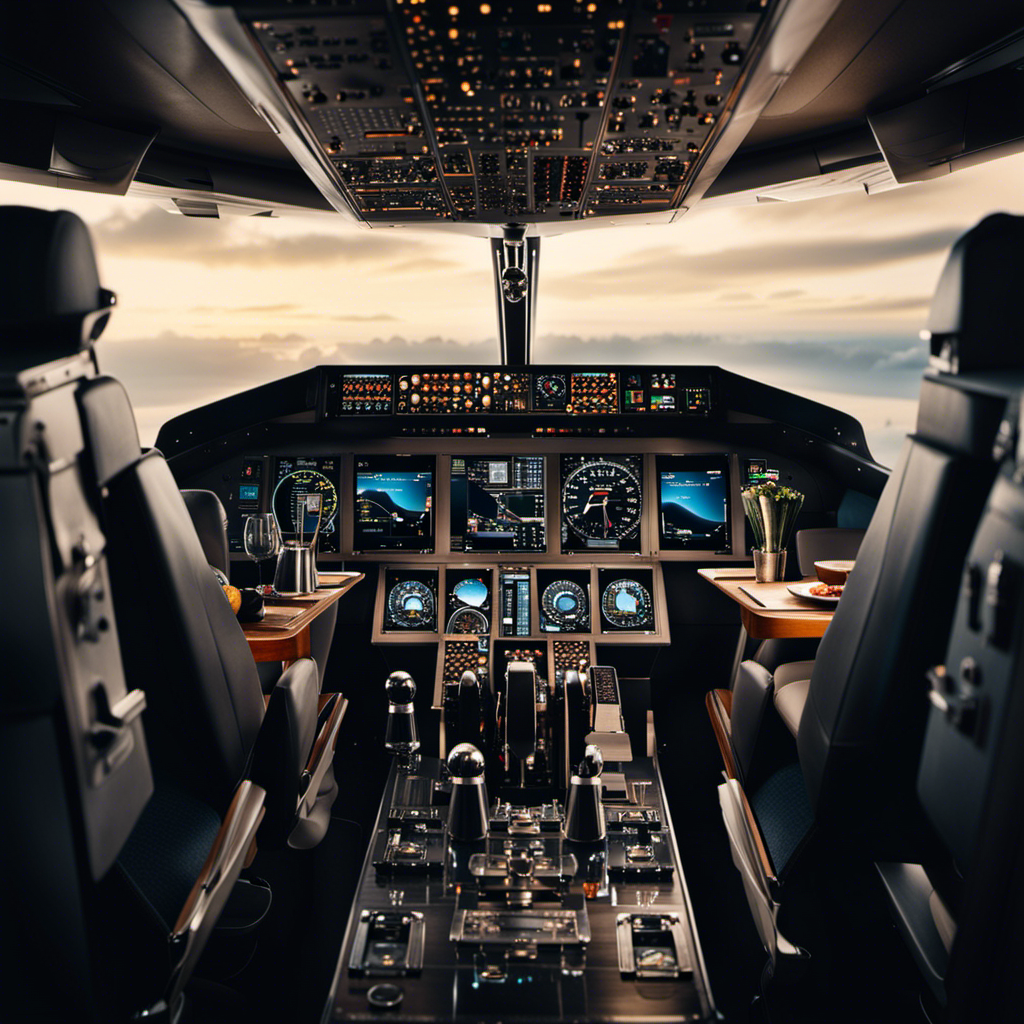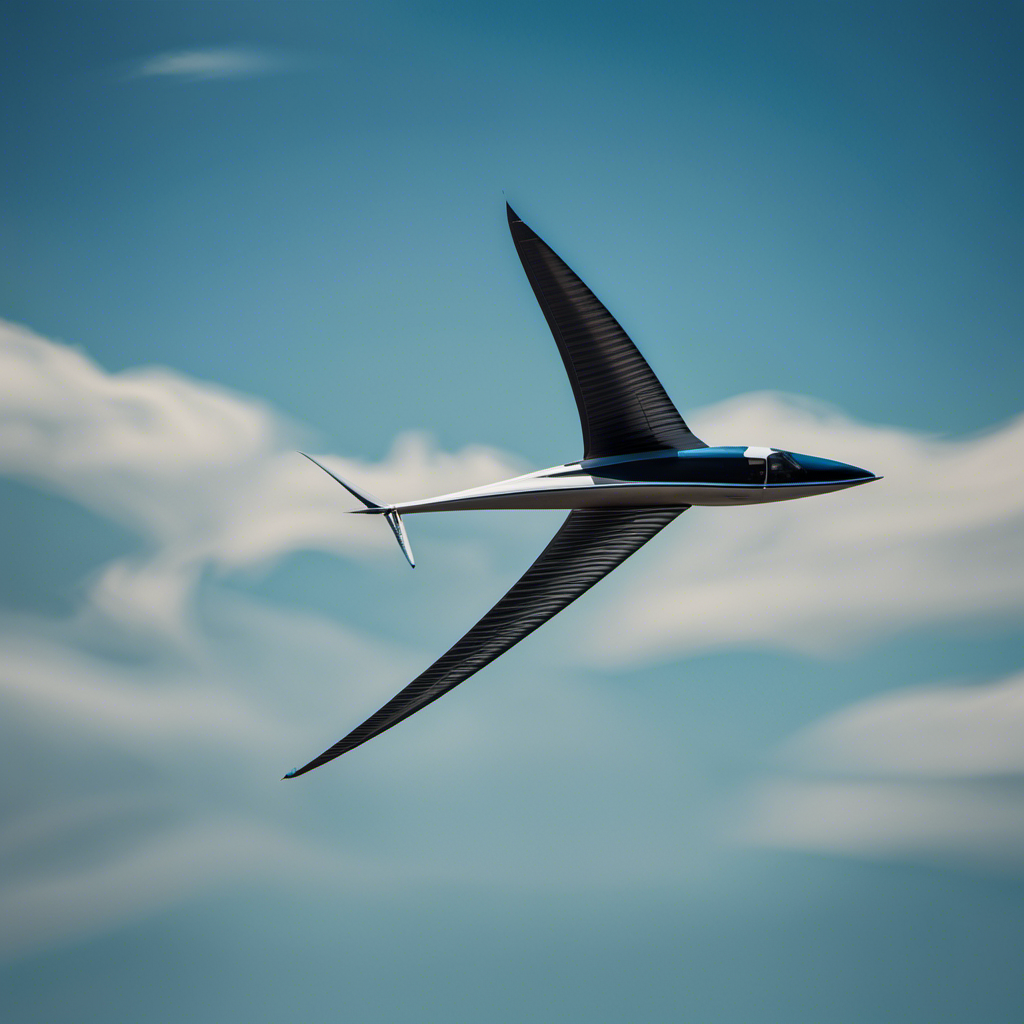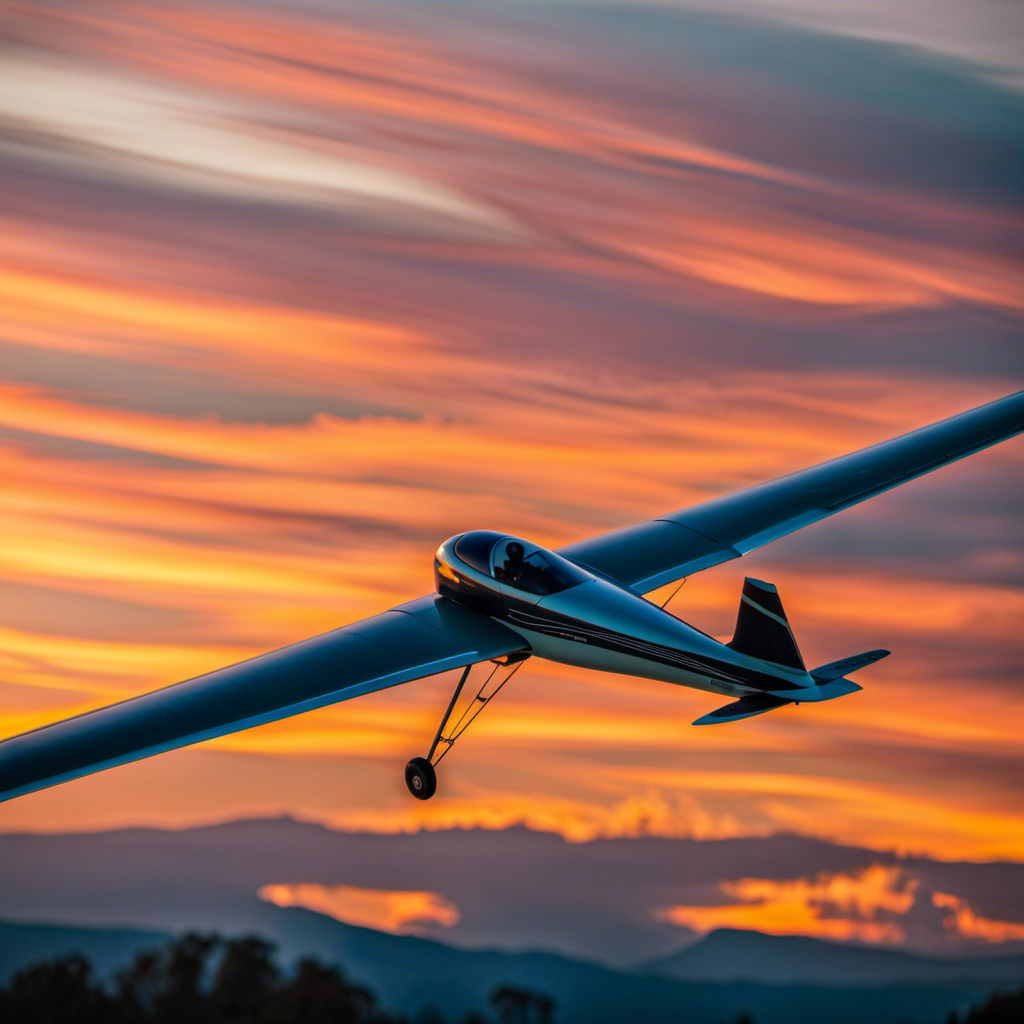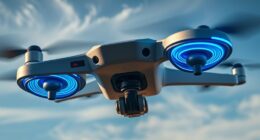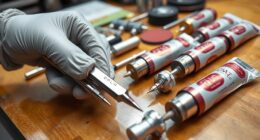As a pilot, I often find myself in the cockpit, flying through the skies, completely focused on the task at hand. But among the sound of the engines and the lights outside, one question lingers: Can pilots eat while in the cockpit?
In this article, we will explore the regulations, safety considerations, and challenges surrounding in-cockpit dining. From meal planning to the influence of circadian rhythms, join me on this journey as we delve into the world of pilot nourishment and safety in the confined space of the cockpit.
Key Takeaways
- Pilots are allowed to consume light snacks and non-alcoholic beverages in the cockpit, but full meals are discouraged due to safety concerns.
- Maintaining a healthy diet is crucial for pilots to optimize their performance, and meal planning and coordination with cabin crew are important.
- Eating in the cockpit poses challenges such as limited space, turbulence leading to spills, and time constraints, so pre-packaged meals and compact containers are preferred.
- Cabin crew plays a role in assisting pilots with meals, ensuring smooth functioning of the flight, and coordinating meal options and dietary requirements.
Airline Regulations Regarding Eating in the Cockpit
According to airline regulations, pilots are generally allowed to consume light snacks and non-alcoholic beverages in the cockpit during flight. However, the consumption of full meals is discouraged due to safety considerations. Eating a full meal requires the use of both hands and can distract the pilot from performing essential tasks. As a pilot, I understand the importance of adhering to safety regulations while operating an aircraft. Mealtime routines in the cockpit must be carefully managed to ensure the safety of all passengers and crew members. It is crucial to understand the potential risks involved in this practice as we transition into the next section about safety considerations for eating in the cockpit.
Safety Considerations for Eating in the Cockpit
For safety reasons, it’s important to consider the potential hazards of consuming food while operating an aircraft. While it may be tempting to enjoy a meal in the cockpit, it is crucial to adhere to aircraft regulations and prioritize safety at all times.
Here are four key considerations regarding eating in the cockpit:
-
Distractions: Eating can cause distractions, taking the pilot’s attention away from critical tasks.
-
Food spills: Accidental spills can lead to slippery surfaces or damage to sensitive equipment.
-
Limited mobility: Eating can restrict the pilot’s movement and hinder their ability to quickly react in emergency situations.
-
Contamination: Food particles or odors can affect the air quality in the cockpit, potentially causing discomfort or health issues.
Understanding these potential hazards allows pilots to make informed decisions and prioritize safety.
Now, let’s delve into the importance of proper nutrition for pilots…
The Importance of Proper Nutrition for Pilots
Understanding the importance of proper nutrition, it’s crucial for pilots to prioritize their dietary needs. As a pilot, I know that maintaining a healthy diet is essential for optimal performance and overall well-being.
Meal planning plays a vital role in ensuring that I have access to nutritious meals, even during long flights. I work closely with cabin crew assistance to coordinate my meal options and ensure they meet my dietary requirements. This collaboration helps me maintain a balanced diet that supports my energy levels and mental clarity throughout the flight.
However, despite the efforts put into meal planning, there are still challenges when it comes to eating in the confined space of the cockpit. Transitioning into this next section, let’s explore these challenges and how pilots navigate them.
Challenges of Eating in the Confined Space of the Cockpit
Transitioning into this next section, let’s delve into the challenges that arise when eating in the tight confines of the cockpit. As a pilot, I can attest to the difficulties of enjoying a meal while flying. The limited space, combined with the need to maintain focus and control, can make eating a challenging task. To emphasize this point, consider the following table:
| Challenge | Description | Strategy |
|---|---|---|
| Limited space | Cockpit space is restricted, making it difficult to maneuver while eating. | Opt for compact, easy-to-handle food items. |
| Turbulence | Turbulent conditions can lead to spills and messes in the cockpit. | Choose spill-proof containers and secure food items properly. |
| Time constraints | Pilots often have limited time to eat due to flight schedules and workload. | Opt for quick and easy meals that can be eaten in short intervals. |
These challenges highlight the need for effective strategies when it comes to eating in the cockpit. Transitioning into the subsequent section about strategies for meal planning and preparation, it is essential for pilots to have a plan in place to ensure they can fuel their bodies adequately during flights.
Strategies for Meal Planning and Preparation
When it comes to meal planning and preparation in the cockpit, there are a few important factors to consider. First, you’ll need to think about the limited space and time constraints. As a pilot, it’s crucial to adhere to airline policies and regulations. Here are some strategies to help you navigate these challenges:
-
Opt for pre-packaged meals that are easy to store and consume. This can save you time and effort in meal preparation.
-
Prioritize non-perishable food items that won’t spoil during long flights. This ensures that you have access to fresh and safe meals throughout your journey.
-
Use compact and stackable containers to maximize space efficiency. This allows you to make the most of the limited storage space available in the cockpit.
Airline policies often restrict the types of meals that can be consumed in the cockpit. Therefore, it’s essential to choose meals that comply with these guidelines. Additionally, proper meal storage is crucial to maintain food quality and prevent contamination.
Now, let’s explore some tips for eating healthy and balanced meals in the cockpit.
Tips for Eating Healthy and Balanced Meals in the Cockpit
To maintain a healthy and balanced diet during flights, it’s important to prioritize nutrient-dense foods that provide sustained energy. In the cockpit, where time is limited and access to food is restricted, mealtime strategies become crucial. As a pilot, I rely on healthy snacks and carefully planned meals to fuel my body and mind throughout long flights. Here are some tips for eating healthy and balanced meals in the cockpit:
| Mealtime Strategies | Healthy Snacks | Benefits |
|---|---|---|
| Plan meals in advance | Nuts and seeds | Rich in |
| healthy fats | ||
| Pack easy-to-eat foods | Fresh fruits | High in |
| and vegetables | vitamins and | |
| minerals | ||
| Stay hydrated | Greek yogurt | Packed with |
| protein |
These mealtime strategies and healthy snacks help me stay nourished and focused during flights. Now let’s explore the role of cabin crew in assisting pilots with meals, ensuring our needs are met without disrupting our responsibilities.
The Role of Cabin Crew in Assisting Pilots with Meals
When it comes to maintaining a healthy and balanced diet in the cockpit, cabin crew assistance plays a crucial role. Not only do they ensure the smooth functioning of the flight, but they also provide mealtime support to pilots.
Cabin crew members are responsible for delivering meals to the cockpit and ensuring that pilots have everything they need to enjoy a meal in-flight. They can assist with setting up the meal trays, opening packaging, and even cutting food into manageable pieces.
Additionally, cabin crew members are trained to handle any potential spills or accidents that may occur during mealtime, ensuring that the cockpit remains clean and free from any distractions. Their presence and assistance greatly contribute to a pilot’s ability to have a nourishing meal while remaining focused on their duties.
However, it is important to be aware of potential distractions and hazards of eating in the cockpit.
Potential Distractions and Hazards of Eating in the Cockpit
Be mindful of potential distractions and hazards that can arise while enjoying your meal in the cockpit. As a pilot, it’s crucial to prioritize safety precautions and minimize any potential distractions that may compromise your focus and attention.
Here are three key points to consider:
-
Secure your meal: Ensure that your meal is properly secured and stable to prevent any spills or accidents during turbulence or sudden maneuvers. Use appropriate containers and utensils that are designed for in-flight use.
-
Minimize food odors: Strong food odors can permeate the cockpit and distract you from your duties. Opt for less aromatic options and avoid foods with pungent smells that can linger and affect your concentration.
-
Maintain cleanliness: Keep the cockpit clean and free from any food debris. Crumbs or spills can interfere with the operation of instruments or controls, posing a potential hazard. Dispose of any waste properly and sanitize your hands before returning to flying duties.
Being mindful of these safety precautions and potential distractions will help ensure a smooth and uninterrupted flight.
Speaking of potential distractions, let’s now explore the impact of food odors on aircraft systems.
The Impact of Food Odors on Aircraft Systems
Food odors can potentially affect the functionality of important aircraft systems. As a pilot, it is crucial to consider food safety and odor control while eating in the cockpit.
The confined space of the cockpit, combined with the sensitive equipment onboard, makes it necessary to be mindful of the smells that can linger after consuming food. Certain strong odors, such as those from spicy or pungent dishes, can permeate the air and potentially interfere with the performance of sensitive instruments.
Therefore, it is essential to choose meals that are not only safe to eat but also have minimal odor. Proper packaging and storage of food can also help prevent any lingering smells. By prioritizing food safety and odor control, pilots can ensure the smooth functionality of their aircraft systems.
Now, let’s discuss the importance of hydration and refreshment options for pilots.
Hydration and Refreshment Options for Pilots
Having access to a variety of hydration and refreshment options is crucial for pilots to maintain their performance and well-being during flights. As a pilot myself, I understand the importance of staying properly hydrated and nourished throughout the journey.
When it comes to meal options, it’s essential to have a selection that includes both nutritious and easily digestible foods. Snacks like granola bars, trail mix, and fresh fruits are great choices to keep energy levels up without causing discomfort.
Hydration strategies are equally vital, especially in the dry cabin environment. I always make sure to have plenty of water and electrolyte-rich drinks on hand to prevent dehydration.
Transitioning into the subsequent section about best practices for staying alert and focused during mealtime, it’s important to consider the timing and portion sizes of meals to avoid drowsiness and maintain optimal alertness in the cockpit.
Best Practices for Staying Alert and Focused During Mealtime
To stay alert and focused during mealtime, it’s important to carefully consider the timing and portion sizes of your meals. Here are some healthy eating tips to help you maintain optimal cognitive function while enjoying your food:
-
Minimize distractions: Create a calm and quiet environment during meals to avoid being mentally pulled in different directions.
-
Eat mindfully: Take the time to savor each bite and pay attention to the flavors and textures of your food.
-
Opt for balanced meals: Include a good mix of carbohydrates, proteins, and healthy fats to provide sustained energy and enhance cognitive performance.
-
Stay hydrated: Drink enough water throughout the day to prevent dehydration, which can lead to fatigue and decreased alertness.
-
Plan ahead: Prepare nutritious meals and snacks in advance to avoid reaching for unhealthy options when hunger strikes.
By following these mealtime strategies, you can optimize your focus and concentration.
Now let’s explore the influence of circadian rhythms on pilot eating habits.
The Influence of Circadian Rhythms on Pilot Eating Habits
Maintaining healthy eating habits while considering circadian rhythms is important for pilots to optimize their performance in the cockpit. Circadian rhythm disruptions, such as jet lag effects, can significantly impact a pilot’s ability to stay alert and focused during their flights.
Understanding the influence of circadian rhythms on pilot eating habits is crucial for ensuring that pilots are adequately nourished to withstand the demands of their job. When flying across time zones, pilots may experience disruptions in their normal meal schedule, leading to irregular eating patterns. This can affect their energy levels and cognitive function, potentially compromising flight safety.
By being mindful of their circadian rhythms and making conscious choices about when and what they eat, pilots can better manage the challenges of eating in the cockpit.
Transitioning into personal stories and experiences of pilots eating in the cockpit, let’s explore how they navigate this aspect of their job.
Personal Stories and Experiences of Pilots Eating in the Cockpit
As you navigate the challenges of eating in the cockpit, you may find it interesting to hear personal stories and experiences of other pilots. Mealtime in the cockpit can be quite challenging, with limited space and the need to remain focused on flying. However, with some strategic planning and mealtime strategies, it is possible to enjoy a meal while in the air. Let me share with you a table of personal experiences and mealtime challenges faced by pilots:
| Pilot | Mealtime Challenge |
|---|---|
| John | Turbulence causing spills |
| Sarah | Limited options for healthy food |
| Mike | Difficulty eating during busy periods |
| Lisa | Finding time for a proper meal |
These stories highlight the various obstacles pilots face when it comes to in-cockpit dining. But fear not, as the future of in-cockpit dining technology holds great promise.
The Future of In-Cockpit Dining Technology
With the advancements in technology, you’ll soon be able to enjoy a hassle-free dining experience in the cockpit. The future of in-cockpit dining is promising, thanks to the continual progress in automation integration. Imagine a cockpit where meals are seamlessly prepared and served, allowing pilots to have nourishing meals without compromising safety.
Future advancements will include specialized food preparation systems that can handle the unique challenges of the cockpit environment, such as turbulence and limited space. These systems will be designed to minimize distractions and ensure that pilots can focus on their primary task of flying the aircraft. By integrating automation into the dining process, pilots will have access to nutritious and convenient meals, enhancing their overall well-being and performance.
Transitioning into the next section, it is essential to strike a balance between nourishment and safety in the cockpit.
Conclusion: Balancing Nourishment and Safety in the Cockpit
As we conclude our exploration of in-cockpit dining technology, it is clear that the future holds great potential for enhancing the mealtime experience for pilots. However, it is important to remember that the primary focus in the cockpit must always be on safety. Balancing the need for nourishment with the need for uninterrupted focus on flying is a challenge that pilots face every day.
To overcome these challenges, effective meal planning strategies are essential. Pilots must carefully consider the timing, content, and logistics of their meals to ensure they are properly fueled without compromising their ability to perform their duties.
Here is a table outlining some meal planning strategies that can help pilots navigate the unique challenges of eating in the cockpit:
| Mealtime Challenge | Meal Planning Strategy |
|---|---|
| Limited space | Opt for compact, easy-to-eat meals and snacks that require minimal utensils and can be consumed with one hand. |
| Time constraints | Prepare pre-flight meals or pack grab-and-go options that can be eaten quickly during short breaks in the flight. |
| Temperature control | Utilize insulated containers or thermos to keep hot foods hot and cold foods cold. |
| Nutritional requirements | Plan meals that incorporate a balance of macronutrients and include protein, complex carbohydrates, and healthy fats. |
Frequently Asked Questions
What are the airline regulations regarding eating in the cockpit?
Airline regulations dictate strict cockpit dining etiquette. As a pilot, I adhere to these rules to ensure safety and professionalism. Eating in the cockpit is not allowed, as it can be a distraction and compromise the operation of the aircraft.
What safety considerations should pilots keep in mind when eating in the cockpit?
When eating in the cockpit, pilots must adhere to strict safety protocols and hygiene practices. This includes ensuring that food is securely stored to prevent spills or contamination, and avoiding distractions while handling meals.
How does proper nutrition impact a pilot’s performance?
Proper nutrition has a significant impact on a pilot’s performance. A well-balanced diet provides essential nutrients that fuel the body and mind, boosting cognitive function, alertness, and focus, ultimately enhancing overall performance in the cockpit.
What are the challenges of eating in the confined space of the cockpit?
Eating in the cockpit presents challenges due to space constraints. For instance, during a turbulent flight, it’s difficult to eat without the risk of spills or choking. These challenges require careful planning and consideration for the pilot’s safety and performance.
What are some strategies for meal planning and preparation for pilots?
When it comes to meal planning and preparation as a pilot, I prioritize meal prepping and ensuring proper food storage. This allows me to have nutritious and convenient meals while in the cockpit.
Conclusion
After thoroughly investigating the truth behind pilots eating in the cockpit, it is clear that while it is not explicitly prohibited by airline regulations, safety considerations must be taken into account.
Proper nutrition is crucial for pilots to maintain optimal performance, but the confined space of the cockpit presents challenges for meal planning and preparation. The influence of circadian rhythms further complicates eating habits.
However, with advancements in in-cockpit dining technology, the future holds potential for improved nourishment options.
Ultimately, striking a balance between nourishment and safety remains paramount for pilots.
